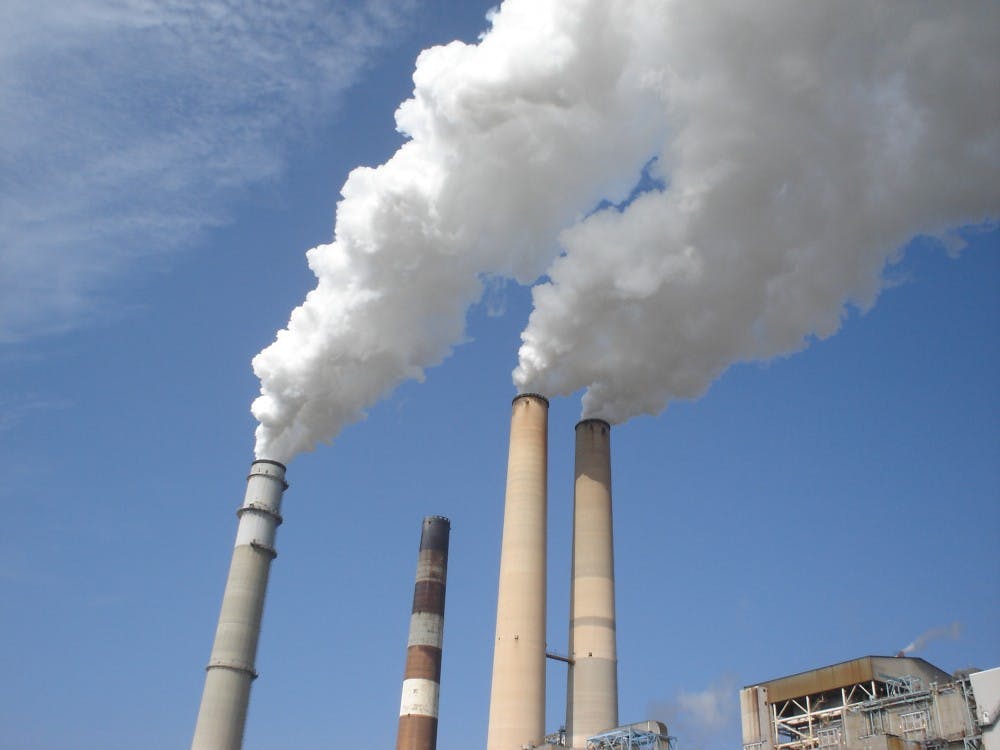When planet Earth was formed almost 4.6 billion years ago following an expansion event known as the Big Bang, it was not exactly conducive to supporting the survival of life.
Earth emerged from a hot mix of gases and solids as a celestial body without an atmosphere, which eventually developed as the earth cooled. This early atmosphere was comprised of hydrogen sulfide, methane and 10 to 200 times as much carbon dioxide as there is in today’s atmosphere.
The cycling of carbon dioxide throughout our atmosphere is regulated by a geologic carbon cycle as well as a biological carbon cycle.
In the beginning, the geologic cycle dominated with contributions from volcanic outgassing and a gaseous carbon dioxide equilibrium with carbonate minerals. However, the production of oxygen from photosynthesis paved the way for the rapid biological cycle to take precedence over the slower geologic cycle.
In recent decades, the use of fossil fuels and the resulting mass release of carbon dioxide have destabilized the temperature balance induced by the dominance of the biological carbon cycle. The bursts of geologic carbon fuel the global warming that is occurring on Earth, and a new study finds that the current trends of carbon dioxide emission indicate that Earth is only about 140 years away from surpassing the levels of carbon dioxide emission seen during the Paleocene-Eocene Thermal Maximum (PETM).
The PETM was Earth’s last major greenhouse warming event that took place nearly 56 million years ago, when the earth warmed up to at least five degrees Celsius with an estimated emission of about 3,000 to 7,000 gigatons of carbon accumulating over the course of 3,000 to 20,000 years.
For today’s warming situation, a new study finds that humans are already distributing carbon dioxide into the atmosphere at a rate nine to 10 times higher than the emissions that took place during the PETM. If the trend continues, by 2159, the amount of carbon dioxide that fossil fuels have added to the atmosphere will match the levels from the PETM.
The statistics predict PETM levels of atmospheric carbon dioxide in as little as five generations.
Philip Gingerich, a paleoclimate researcher at the University of Michigan and a leading author of the study, emphasized the magnitude of the situation in a recent press release.
“You and I won’t be here in 2159, but that’s only about four generations away. When you start to think about your children and your grandchildren and your great-grandchildren, you’re about there,” Gingerich said.
Gabriel Bowen, a geophysicist at the University of Utah, further shared his thoughts on the matter.
“Given a business-as-usual assumption for the future, the rates of carbon release that are happening today are really unprecedented, even in the context of an event like the PETM. We don’t have much in the way of geologic examples to draw from in understanding how the world responds to that kind of perturbation,” Bowen said in the press release.
The effects of such high concentrations of carbon dioxide in the atmosphere are unknown.
Vanderbilt University paleontologist Larisa DeSantis emphasized the dangers of global warming in the press release.
“It’s hard to compare biotic effects because the world during the PETM was quite different. We live in a very different world today, with different groups of animals, with humans being the dominant species... but we know there are many negative consequences of dramatic warming on vast numbers of species, including our own.”
Strong parallels have been drawn between the PETM and today’s global warming; however, PETM most likely will not stand as a model for the future of modern climates due to the condensation of the warming into a smaller time frame. Although the exact cause of the PETM is debated, there is evidence that states that the release of methane from the seabed caused by the increase in temperatures is capable of triggering a chain of events that lead to a detrimental global warming phenomenon. This may be happening in oceans today to make the situation even worse.
Even without knowledge of what will happen, it is obvious that precautions should be initiated soon.
“It’s not just about 100 years from now; it’s going to take significant periods of time for that carbon dioxide to make its way back into the earth’s crust. It’s not a short-term event. We’re really committing ourselves to many thousands of years of a warmer world if we don’t take action quickly,” DeSantis said.

















